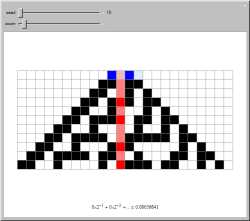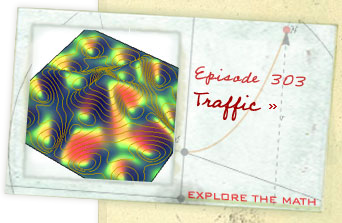


Billions and billions of stars.
CHARLIE (O.S.)
"God does not play dice with the
universe."
The UNIVERSE dissolves into a PHOTO of EINSTEIN.
CHARLIE (O.S.) (CONT'D)
Albert Einstein said this, in
response to scientists who were
postulating that our world, at its
most fundamental level, is
irreducibly random.
Lecture hall. Charlie projects SLIDES for an ungrad class.
CHARLIE
Einstein wasn't alone in this
belief. Human beings in general
have trouble with the concept of
randomness. We seek patterns, we
perceive cause and effect.
A SLIDE of a COMMERCIAL AIRPORT with AIRLINERS.
CHARLIE (CONT'D)
Let's say there are three airline
crashes in two months. As happened
in 1996. Do you cancel your
upcoming flight and drive instead?
A SLIDE of a HIGHWAY filled with traffic.
CHARLIE (CONT'D)
What is essentially a random streak
or "run," we perceive as a pattern.
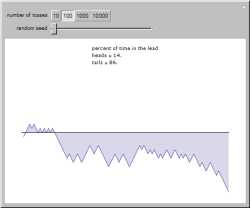
Consider a
game in which a fair
coin is
tossed repeatedly. When the cumulative number
of heads is greater than the cumulative number of tails, heads is in the lead. Tails moves to the lead when the
cumulative number of tails is greater than the cumulative number of heads. Intuition might suggest that with a large
number of coin tosses, heads and tails would spend roughly equal time in the lead.
INT. DINING ROOM. EPPES HOUSE - DAY
MEGAN
Charlie, in mathematics, can
something be too random?
CHARLIE
Randomness isn't quantifiable.
Something can't be a little random -
- or very random. Or too random.
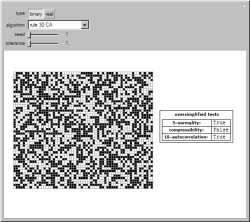
A
random or pseudorandom number generator
(RNG) is a computational or physical device designed to generate a random sequence of numbers. There are many different
methods for generating random
bits and testing their
quality.
INT. DINING ROOM. EPPES HOUSE - DAY
ALAN
What if there's a pattern that you
just haven't been able to detect?
CHARLIE
That's Hidden Variable Theory. The
idea that nothing in the world is
ever really random -- because
there's always some influence or
force we can't detect.
ALAN
And is that theory a good one?
CHARLIE
That's what Einstein believed in
1935, and it proved not to be true,
at least in the way he believed it.
Many scientists now believe that
God does play dice with the
universe.
ALAN
But -- doesn't dice have rules?
MEGAN
And a die only has six sides,
right?
CHARLIE
Okay, forget the dice, that
metaphor's not so good.
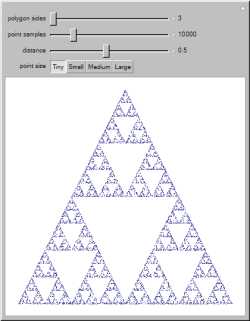
This Demonstration starts with the center
C of a
regular n-sided polygon and draws a new point at a fraction of the distance
r between
C and a random
vertex. Repeating
this process will, for certain initial conditions, produce
fractal images. This procedure is known as the
chaos game.
INT. CALSCI. LARRY'S OFFICE -- DAY
Larry's working at his chalkboard. Charlie comes in.
CHARLIE
Pythagorean theorem, Law of
Cosines, metrics--
LARRY
Equivalence principle.
CHARLIE
Back to basics.
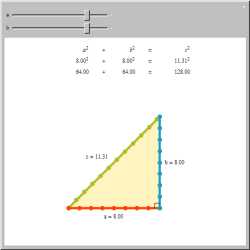
INT. FBI BULLPEN -- DAY
Charlie pulls out the iPod again.
CHARLIE
Remember I talked about the shuffle
mode?
DAVID
How people perceive patterns when
there aren't any.
CHARLIE
The shuffle mode on this music
player is controlled by an
algorithm. That algorithm creates
a random order for the songs to be
played in. But it's a psuedorandom
order. You know why?
MEGAN
No idea --
DAVID
That's why we have you.
CHARLIE
There's one thing the algorithm
will never do ... repeat a song.
It makes sure the same song is
never repeated twice.
